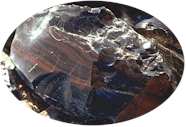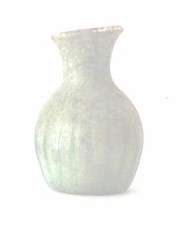Glass and mirrors - A rich history
Glass history Part 1
5000 BC - AD 100
» The discovery of glass

Glass probably exists since the beginnings of time, formed as a result of high temperature .... Glass history »»
Glass history Part 2
AD 100 - Industrial Revolution
» The Roman influence

The Romans have made it possible that the knowledge of making glass could be spread so quick and in such a large area. With its conquests, trade relations, road building, ....Glass history Part II »»
Glass history Part 3
Industrial Revolution - Present day
» A craft becomes industry

It was not until the latter stages of the Industrial Revolution, however, that mechanical technology for mass production and in-depth scientific research into the relationship between the composition of glass and its physical qualities began to appear in the industry.....Glass history Part III »»
The history of mirrors

Mirrors are used by man long befor the discovery of making glass. Made of metal ....Mirror history »»
Glass and Mirrors history.
Additions to lower the melting point.
Glassmelting - Potash and Soda
Common glass is mostly amorphous silicon dioxide (SiO2), which is the same chemical compound as quartz, or in its polycrystalline form, sand. Pure silica has a melting point of about 2000 Celsius, during a long time, there have only been open fires. With these fires the intens heat could not be reached. So some substance had to be aded to lower the melting point.
Ancient scientists discovered that other materials such as soda, when melted in close contact with sand, would permit the melting of silica at much lower temperatures. Such materials are known as fluxes, and soda was probably the first flux.
Soda (sodium carbonate Na2CO3), or potash, the equivalent potassium compound, lowers the melting point to about 1000 Celsius. However, the soda makes the glass soluble, which is obviously unhelpful, so lime (calcium oxide, CaO) is the third component, added to restore insolubility.
Natural soda, wich accidentaly had been discoverd to be a perfect substance to be melted with sand to glass, was not available in verry large quantity's.
With the breakdown of the Roman Empire, glassmaking technology stagnated in Europe; in fact, it almost disappeared. Transportation and trade to regions north of the Alps stagnated and glassmakers were forced to find alternatives for soda.
This alternative was found in a substance called "potash".
Potash
Potash, potassium hydroxide (KOH), was obtained by the ashes of Beechwood and Oak.
To obtain potashes, an enormous amount of wood had to be burned to get 0,43 m3 potash, 1000 m3 wood was needed, a whole tree was simply set to fire. From the ash potash was then extracted. This name derives from the ancient practice of obtaining potassium salts by burning wood, extracting the ash with water and evaporating the resulting solution in iron pots hence "pot-ashes". The resulting solid would be a mixture of potassium salts, mainly potassium carbonate, chloride and sulphate.
The large quantity of wood that was needed to fire the ovens and obtain potash, together with primitive transportation, forced glassmakers to rebuild their ovens frequently.
In the Mediterranean region glassmakers used an alternative for natural soda, a potash derived from saltwaterplants.
Glauber's salt
Glauber's salt - Salt made of sodium sulfate (Na 2 SO 4 ·10H 2 O), was discoverd by Rudolf Glauber (1604-1670) and was mainly used medicinal. This type of salt never realy became a substitute for potashes.
Due to improvements in the manufacturing of glass and the growing capacity of the ovens, the use of a molten glass with higher viscosity, demanded higher temperatures and thus more additions to lower the melting point.
Manufacturing glauber's salt was simply to expensive to become a substitute for potash.
It took until the 19th century that a substitute had been found; soda.
Soda
The first type of soda that had been used was a natural soda, that was not available in large quantity's. Potash also could not fulfil the increasing demand. A substitute had to be found.
Nicolas Leblanc (born 1742?, Issoudun, France died Jan. 16, 1806, Saint-Denisa) a French surgeon and chemist developed in 1790 the process for making soda ash (sodium carbonate) from common salt (sodium chloride). This process, which bears his name, became one of the most important industrial-chemical processes of the 19th century.
Ernest Solvay invented the Solvey process (the ammonia process for the manufacture of soda) in 1861. Solvay an industrial chemist and manufacturer, was born in Brussels, Belgium. Ernest Solvay built his first factory at Couillet, Belgium, in 1863, where production of soda (sodium carbonate) began in 1865. However, it was not until 1872, when Ernest Solvay patented the industrial production of sodium carbonate - also known as soda ash - using common salt, ammonia, carbon dioxide (CO2) and lime.
At last a replacement for natural soda and potash had been found. The discovery and industrial production of soda was one of the most important developments in manufacturing glass.
Next to the development of additions that lower the melting point, the way an oven is heated is very important. Wood fired ovens were slowely replaced by ovens fired with coal. These ovens could be heated to a significantly higher temperature.
Both developments contributed to the fact that deforesting on a large scale came to an end. At the same time, ovens did not have to be rebuild over and over again. An oven that uses coal is best build near a coal mine, and can stay there for a long time.